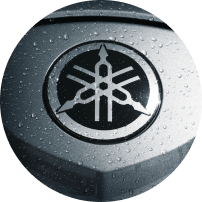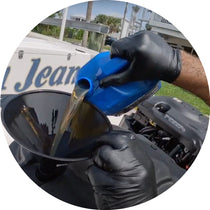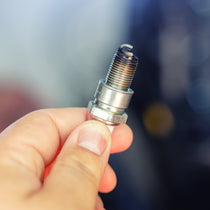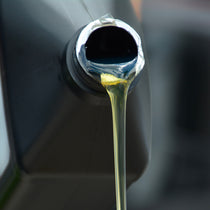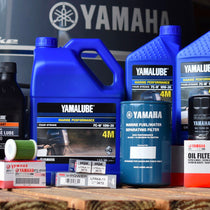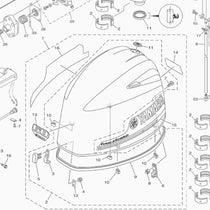Changing the oil in your Yamaha outboard is crucial to regular maintenance, ensuring your engine’s smooth operation and reliability. The process involves draining the old oil, replacing the oil filter, and adding new, clean oil. While a professional mechanic can perform this task, many individuals complete it themselves to save time and money. This guide provides a step-by-step process for changing the oil in a Yamaha outboard, helping you enhance the performance and reliability of your engine.
The video embedded within this article shows the Yamaha propeller change performed on a Yamaha F250 outboard. However, this article’s video and step-by-step instructions apply to the following Yamaha outboard engine models:
- F225 4.2L V6
- F250 4.2L V6
- F300 4.2L V6
What You’ll Need for the Job
- Yamalube marine engine oil
- Yamaha oil filter
- Oil filter wrench
- Gloves
- Oil pan or container
- Oil extraction pump
- Funnel
- Rags
Prolong Your Engine’s Life: The Impact of Regular Oil Changes on Yamaha Outboard Engines
The Role of Engine Oil
Regular oil changes are indispensable in maintaining your Yamaha outboard engine’s health, efficiency, and longevity. Incorporating oil changes into your routine maintenance schedule contributes to trouble-free outings and ensures that your engine serves you faithfully for many more years.
Engine oil’s primary role is to lubricate the numerous moving parts within the engine. These parts function at high temperatures; without adequate lubrication, there’s a significant risk of wear and tear. Routine oil changes guarantee these components remain well-lubricated, minimizing friction and averting untimely wear.
In addition to lubrication, fresh oil is vital for regulating the engine’s temperature. Oil loses its capacity to absorb and dissipate heat as it ages, leading to engine parts’ potential overheating. Regular replacement of old oil with new keeps the engine operating at an optimal temperature.
Why Regular Oil Changes are Important
Over time, oil can accumulate contaminants that turn it into sludge, detrimentally impacting engine efficiency and potentially causing long-term damage. Consistent oil changes are crucial in eliminating this sludge, ensuring the circulation of clean oil within the engine.
Moreover, modern engine oils are formulated with additives designed to shield the engine’s metal surfaces against corrosion. As oil ages, these additives break down, diminishing the oil’s protective capabilities. Regular oil changes are essential to maintain the engine’s protection against corrosion.
Another notable advantage of regular oil changes is enhanced fuel efficiency. A consistently well-lubricated engine performs more smoothly and efficiently, improving fuel efficiency and leading to cost savings and fewer trips to the fuel dock.
Above all, the most influential reason for regular oil changes is to extend your engine’s lifespan. Regular oil changes ensure the engine’s internal components remain lubricated, cool, and clean, paving the way for a more durable and reliable outboard engine.
Your Oil Change Schedule: Pinpointing the Perfect Time
Knowing when to change the oil in your Yamaha outboard engine is as crucial as the oil change process. The right timing ensures efficient engine operation and an extended lifespan. Here’s a guide to help you determine the best oil change intervals.
- Commit to Annual Maintenance: No matter how often you boat, change your engine oil at least once a year. This annual regimen removes contaminants and keeps the engine lubricated, even if you occasionally let it sit idle.
- Track Hours of Operation: Some boaters schedule oil changes based on the engine’s running hours. A common guideline suggests an oil change every 50-100 hours, but this recommendation might vary by outboard model.
- Always Check the Manufacturer’s Recommendations: Your Yamaha outboard’s owner manual is your top reference. Manufacturers set specific guidelines from rigorous testing to maximize the engine’s lifespan.
- Assess Your Usage Patterns: If you use your boat every weekend or even daily, you’ll need to change the oil more frequently than someone who takes their boat out once a month.
- Monitor the Oil’s Appearance: Regularly inspect the engine oil’s color and consistency. Fresh oil usually looks clear amber, but as it ages, it turns darker and may feel gritty. If the oil looks or feels different, replace it.
- Consider the Environment: Boating in challenging environments, especially in salty or dusty areas, can contaminate oil faster. These conditions might require you to change the oil more frequently.
- Watch for Changes in Engine Performance: If your engine starts running less smoothly or makes unfamiliar noises, it might indicate the need for fresh oil.
- Plan for Seasonal Downtime: If you store your boat during specific seasons, change the oil beforehand. This practice ensures the engine doesn’t house contaminants during inactive periods.
In summary, while these guidelines provide a starting point, various factors influence the ideal time to change your Yamaha outboard engine’s oil. Stay attentive to your engine, adjust your maintenance based on your boating habits, and ensure you prioritize regular checks.

Tools and Supplies for a Yamaha Outboard Oil Change
- Gloves: Wear gloves to keep your hands clean and safeguarded from the old oil and engine components.
- Yamaha Outboard Engine Oil: Use the correct grade and quantity to ensure the optimal functioning of your engine.
- Yamaha Outboard Oil Filter: Choose an oil filter compatible with your specific outboard model for effective filtration.
- Oil Filter Wrench: Use an oil filter wrench for effortless removal and secure replacement of the oil filter.
- Oil Pan or Container: Have an oil pan or container ready to catch and hold the old oil, preventing spills and messes.
- Siphon Pump: A siphon pump is essential for efficiently extracting the old oil from the engine.
- Funnel: Utilize a funnel to ensure a clean and precise pour of the new oil into the engine, avoiding unnecessary spills.
- Rags: Keep rags handy to quickly clean up accidental spills or drips during the oil change.
Step-by-Step Guide to Changing Oil in a Yamaha Outboard
- Preparation:
- Position your Yamaha outboard on a level surface before beginning the oil change process. This step ensures a smooth and clean oil change.
- Siphon Out the Oil:
- Utilize a siphon pump to extract the old engine oil via the dipstick hole, directing it into an oil pan or siphon container. Confirm that the siphon pump hose remains unkinked to facilitate effortless oil removal. This method ensures you remove the maximum amount of old oil, providing a clean base for the new oil.
- Change the Oil Filter:
- While the old oil is draining, locate the oil filter on the engine. Use an oil filter wrench to unscrew and discard the old filter. Manually screw in the new oil filter until snug, ensuring not to over-tighten. Use the oil filter wrench to finish the tightening process.
- Refill with New Oil:
- Find the oil fill cap on the top of the engine. Insert a funnel into the fill hole and pour in the designated amount and type of Yamalube Marine Engine Oil.
- Clean Up:
- Dispose of the used oil and filter responsibly. Many automotive stores or marinas offer used oil recycling services.
Conclusion
In conclusion, regular and timely oil changes are essential to ensure your Yamaha outboard engine’s prolonged efficiency and reliability. By following the outlined steps – preparing the workspace, siphoning out the old oil, changing the oil filter, refilling with new oil, and cleaning up responsibly – you can effectively perform an oil change, ensuring your engine remains in peak condition.
Performing these steps will not only extend the life of your engine but also enhance its performance, leading to smoother, more enjoyable outings on the water. So, keep your engine healthy and your voyages trouble-free by making oil changes an integral part of your regular maintenance routine. Remember, a well-maintained engine is the key to uninterrupted and enjoyable boating adventures.
Important Note
Always consult your engine’s owner’s manual for instructions and information specific to your engine. If you need clarification on performing an oil change, consult a Yamaha-certified mechanic.
PartsVu and Platinum Mobile Marine Partnership
Huge thanks go to Frank Cutri, the owner and operator of Platinum Mobile Marine, a mobile mechanic service serving the Lee County, Florida area, for partnering with PartsVu on the Boat Maintenance Matters series.
Together, we are working hard to build a library of step-by-step instructions on common outboard motor repair and maintenance tasks.


